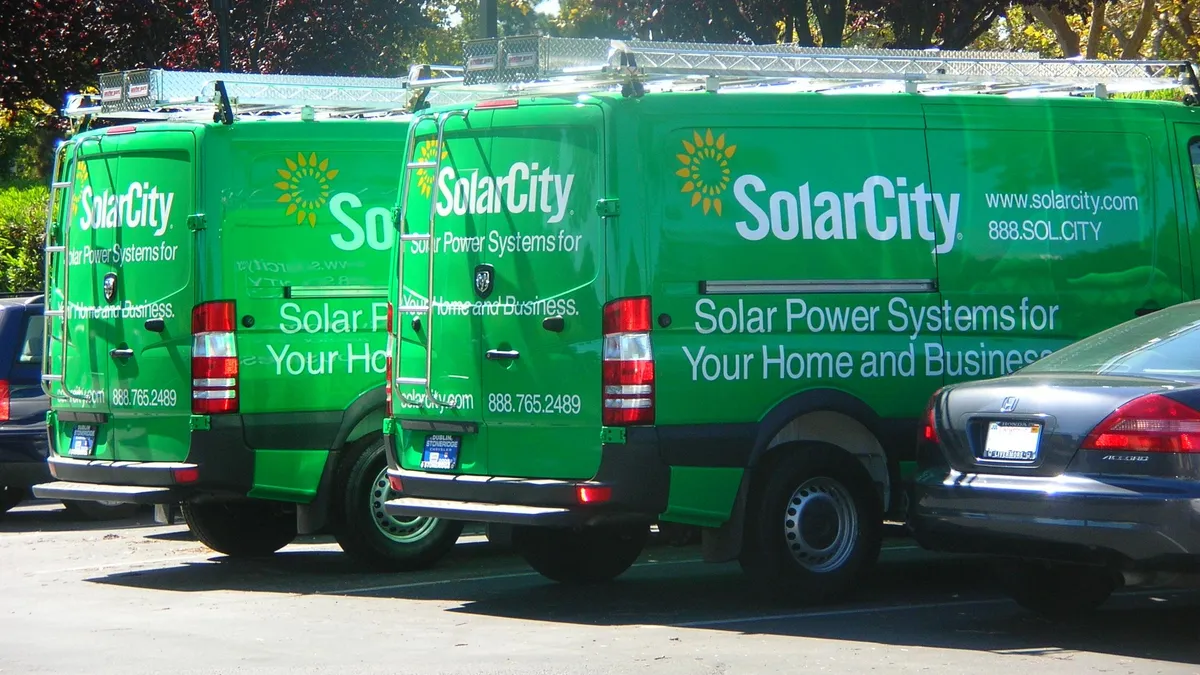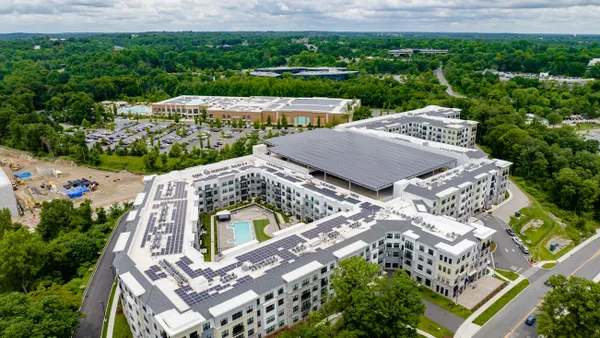Dive Brief:
- Peter Rive, CTO and Co-Founder of SolarCity, took to his company's blog Tuesday to give the nation's utilities some advice on rooftop solar and dealing with its challenges.
- Utilities don't face a cost shift, Rive wrote, because solar customers largely still pay the utilities enough to cover the cost of serving them. Rather, they face a modest revenue shift as customers reduce their electricity consumption from the grid when they install rooftop systems.
- That revenue shift doesn't have to equal a death spiral, however. Rive wrote that utilities can recoup those losses and more by purchasing services on the distribution system that allow them to put off or forego infrastructure investments.
Dive Insight:
The nation's biggest solar installer has never been shy about stirring the pot with utilities, especially in recent weeks. In January, Jonathan Bass, vice president for communications at SolarCity, wrote a firmly-worded post called "Monopoly Money," in which he took Arizona Public Service and other utilities to task for pushing claims about misleading installer sales tactics to the Consumer Financial Protection Bureau and Federal Trade Commission.
"The reality is that rooftop solar providers give customers a greater level of transparency into future pricing than any utility in America," Bass wrote. The piece got wide play in energy circles. "The solar-utility battle is getting ugly," Greentech Media's weekly podcast declared.
Now the installer is taking on a more fundamental utility issue with rooftop solar: decreasing utility revenues. Rive wrote that utilities do not technically face a cost shift because, according to a study by California regulators, solar customers pay an average of 103% of the utility's cost to serve them.
Instead, they face a revenue shift, Rive wrote, although not a large one. Calling on a study from the consultancy Accenture, he claimed utilities will face a revenue loss of "less than 3% through 2025."
Rive is not alone in trying to reframe the debate over solar costs to utilities. Former FERC Chair current Stoel Rives Partner Jon Wellinghoff and Clean Power Finance VP James Tong cited the same CPUC study as Rive to argue that the cost shifting argument is missing the point. Solar users may be shifting some costs, they wrote, but that is not the same as "not paying their fair share."
Rive wrote that instead of trying to limit revenue shifting, utilities should embrace the new, distributed grid to their own advantage."For example," he wrote, "imagine a utility that showed regulators that by purchasing services on the distribution system, such as capacity, power quality, voltage control, and frequency support, they could avoid capital investments in infrastructure."
Rive wants utilities to be indifferent to whether customers install solar or not. "The major obstacle preventing that from happening today is utilities’ inability to rate-base infrastructure-as-a-service," he concluded.
Some utilities are thinking that way already, he pointed out. New York's Con Ed has opted to invest in demand side management to delay investing $1 billion in a new substation, while regulatory proceedings in New York and California hold promise for realigning utility incentives toward distributed energy.















